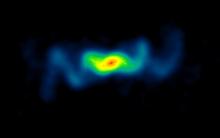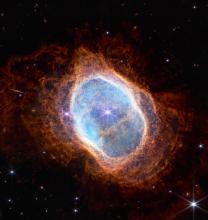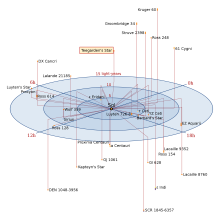Listen to today's episode of StarDate on the web the same day it airs in high-quality streaming audio without any extra ads or announcements. Choose a $8 one-month pass, or listen every day for a year for just $30.
You are here
Twin Jewels
The jewel of the northern crown caps the sky tonight. It’s high in the east at nightfall, and passes overhead a few hours later.
Alphecca is the brightest star of Corona Borealis, the northern crown — a semicircle of stars that looks like a tiara.
Alphecca actually consists of two jewels — two stars. We see them as a single point. If we could see them individually, though, one would shine pure white, the other yellow.
That’s an indication of their surface temperatures. The yellow star is about 10,000 degrees Fahrenheit — about the same as the Sun. The white star is almost twice as hot.
Surface temperature is driven by nuclear reactions deep inside the star, which create energy. The energy makes its way to the surface and shines away into space.
The rate of those reactions is driven by the star’s mass. Alphecca’s yellow star, for example, is a bit less massive than the Sun. Its gravity squeezes the core tightly enough to heat it to more than 20 million degrees. That’s a little cooler than the Sun’s core. As a result, the core produces a little less energy than the Sun, so the star is a little fainter and cooler than the Sun.
The white star is heavier than the Sun, so its core is twice as hot as the Sun’s. So the star’s nuclear engine runs at a faster rate, producing far more energy. That makes the surface hotter, too. And it makes the star shine far brighter than the Sun — lighting up the jewel of the northern crown.
Script by Damond Benningfield





